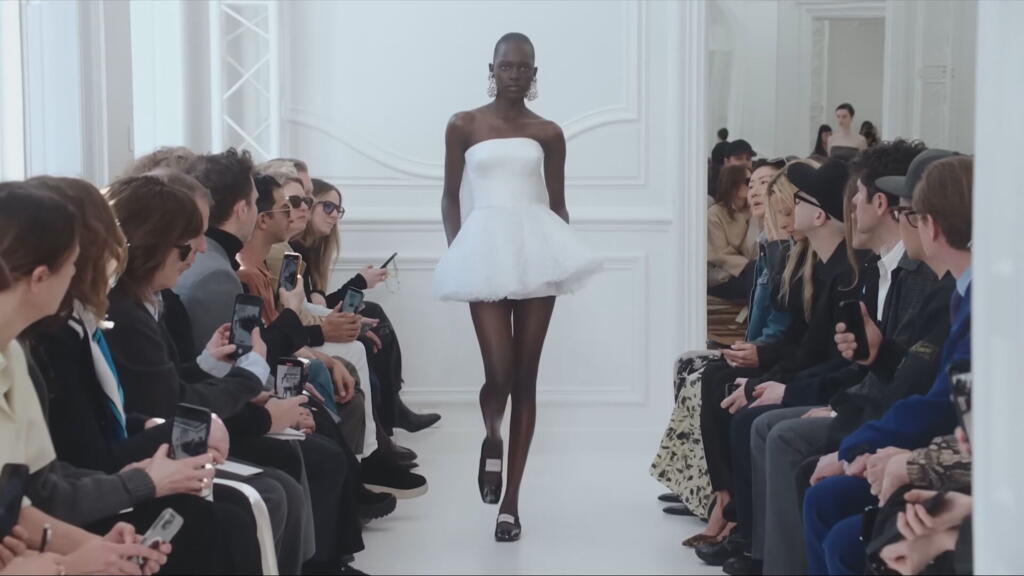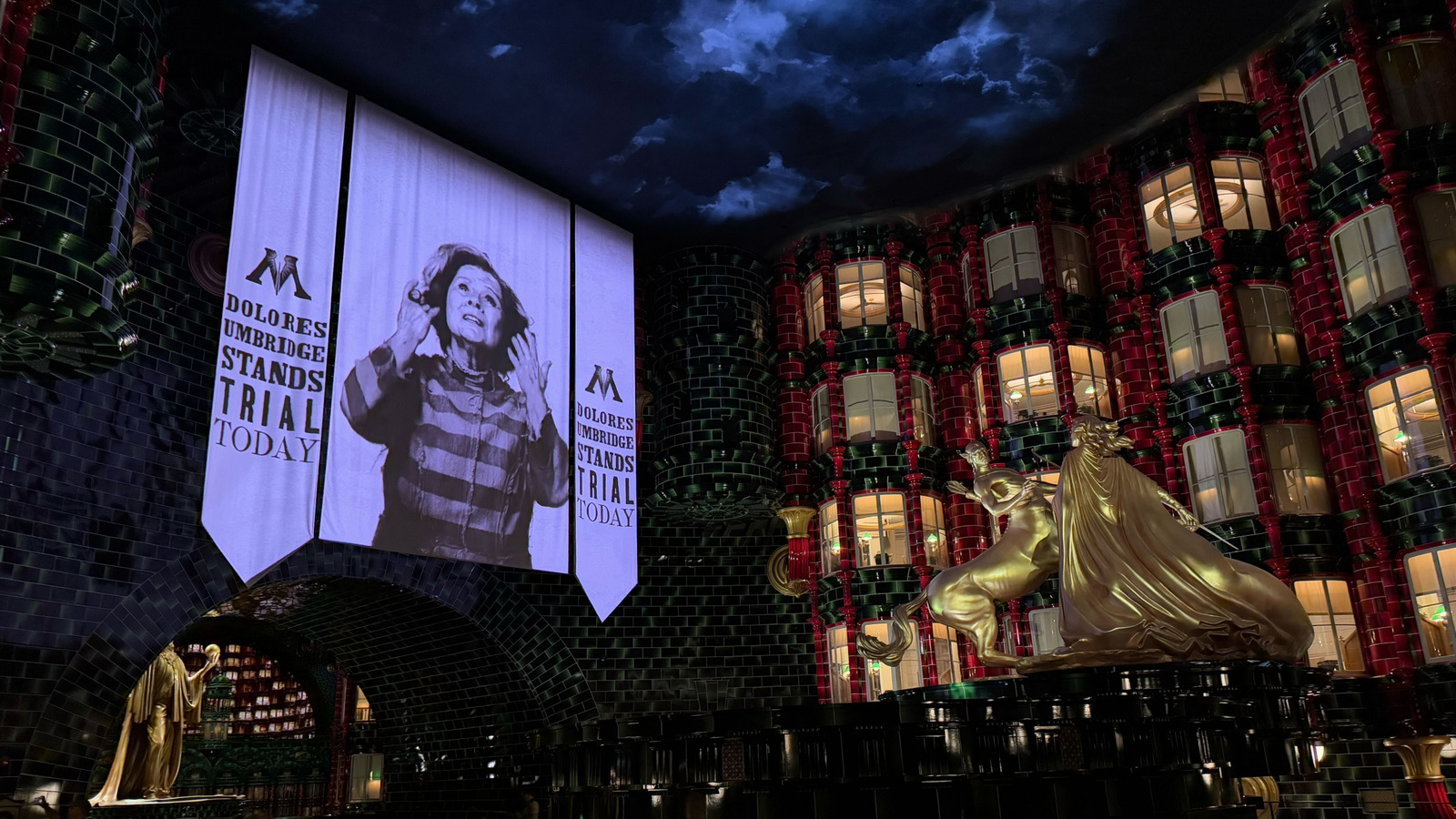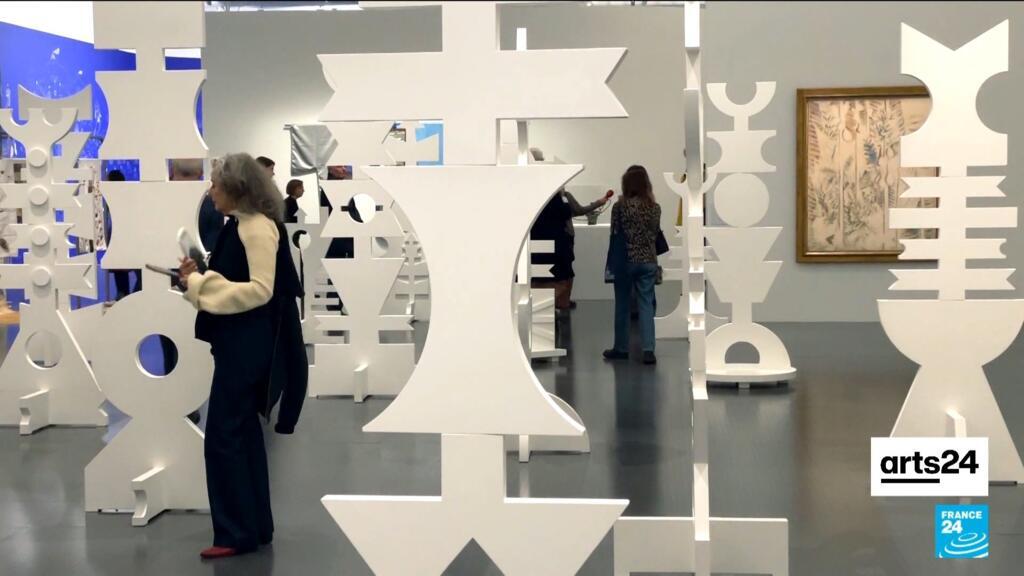5 methods to identify a pretend masterpiece

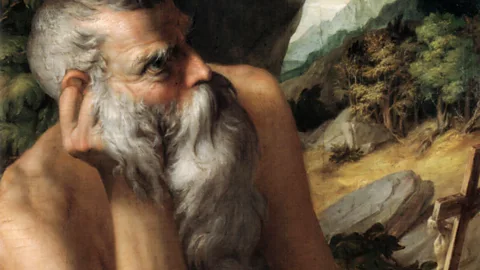 Alamy
AlamyThe latest discovery of an artwork forger’s workshop reminds us of the lengthy historical past of fraudulent artworks – listed below are the easy guidelines to work them out.
It is all over the place: pretend information, deep fakes, identification fraud. So ensnared are we in a tradition of digitised deceptions, a phenomenon more and more augmented by synthetic intelligence, it might be straightforward to assume that deceit itself is a high-tech invention of the cyber age. Latest revelations nevertheless – from the invention of an elaborate, if decidedly low-tech, artwork forger’s workshop in Rome to the sensational allegation {that a} cherished Baroque masterpiece in London’s Nationwide Gallery is a crude simulacrum of a misplaced unique – remind us that duplicity on the earth of artwork has an extended and storied historical past, one written not in binary ones and zeroes, however in not possible pigments, clumsy brushstrokes and suspicious signatures. On the subject of falsification and phoniness, there may be certainly no new factor below the Solar.
On 19 February, Italy’s Carabinieri Command for the Safety of Cultural Heritage uncovered a covert forgery operation in a northern district of Rome. Authorities confiscated greater than 70 fraudulent artworks falsely attributed to notable artists from Pissarro to Picasso, Rembrandt to Dora Maar, together with supplies used to imitate classic canvases, artist signatures, and the stamps of galleries now not in operation. The suspect, who has but to be apprehended, is believed to have used on-line platforms akin to Catawiki and eBay to hawk their phoney wares, deceiving potential patrons with convincing certificates of authenticity that they likewise contrived.
Information of the clandestine lab’s discovery was rapidly adopted by publicity for a brand new guide, due for launch this week, alleging that considered one of The Nationwide Gallery’s highlights is in no way what it appears. In line with artist and historian Euphrosyne Doxiadis, writer of NG6461: The Faux Nationwide Gallery Rubens, the portray Samson and Delilah – a big oil-on-wood attributed to the seventeenth Century Flemish grasp Peter Paul Rubens and bought by the London museum in 1980 for £2.5m (then the second-highest worth ever paid for a portray at public sale) – is three centuries youthful than the date of 1609-10 that sits beside it on the gallery wall and is incalculably much less completed than the museum believes.
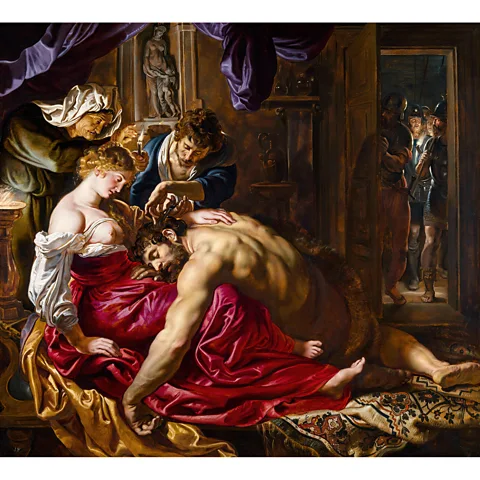 Alamy
AlamyDoxiadis’s conclusion corroborates one reached in 2021 by the Swiss firm, Artwork Recognition, which decided, by way of using AI, that there was a 91% chance that Samson and Delilah is the work of somebody apart from Rubens. Her assertion that the brushwork we see within the portray is crass and wholly inconsistent with the fluid circulate of the Flemish grasp’s hand is strongly contested by The Nationwide Gallery, which stands by its attribution. “Samson and Delilah has lengthy been accepted by main Rubens students as a masterpiece by Peter Paul Rubens”, it mentioned in an announcement given to the BBC. “Painted on wooden panel in oil shortly after his return to Antwerp in 1608 and demonstrating all that the artist had discovered in Italy, it’s a work of the very best aesthetic high quality. A technical examination of the image was introduced in an article in The Nationwide Gallery’s Technical Bulletin in 1983. The findings stay legitimate.”
The divergence of opinion between the museum’s consultants and people who doubt the work’s authenticity opens a curious house wherein to mirror on intriguing questions of creative worth and advantage. Is there ever legitimacy in forgery? Can fakes be masterpieces? As extra refined instruments of study are utilized to work and drawings whose legitimacy has lengthy been in query (together with a number of works attributed to Leonardo da Vinci, such because the hotly disputed chalk and ink drawing La Bella Principessa), in addition to these whose validity has by no means been unsure, debates concerning the integrity of cultural icons are solely prone to speed up. What follows are a handful of useful ideas to remember when navigating the approaching controversies – 5 easy guidelines for recognizing a pretend masterpiece.
Rule 1: Pigments by no means lie
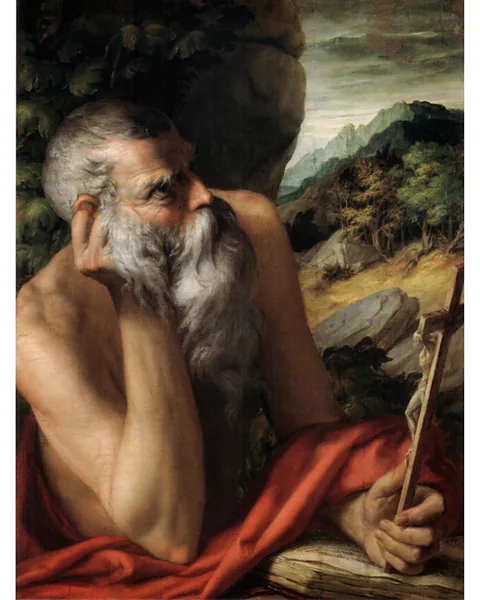 Alamy
AlamyTo be a profitable artwork forger requires greater than technical proficiency and a misplaced moral compass. It is not sufficient to approximate the dibby-dabby dots of a Georges Seurat, say, or the thick expressive swirls of Vincent van Gogh. It’s worthwhile to know your historical past in addition to your chemistry. Anachronistic pigments offers you away each time and have been the downfall of German artwork forger Wolfgang Beltracchi and his spouse Helene, who succeeded in promoting makeshift modernist masterpieces for hundreds of thousands earlier than a careless squeeze of prefab paint onto their audacious palettes in 2006 sealed their destiny.
Beltracchi, whose modus operandi was to create “new” works by everybody from Max Ernst to André Derain, reasonably than recreate misplaced ones, was at all times cautious to combine his personal paints to make sure they contained solely components out there to whomever he was making an attempt to impersonate. He solely slipped up as soon as. And that was sufficient. Fabricating a wonky Der Blaue Reiter-ish purple panorama of jigsawed horses that he attributed to the German Expressionist Heinrich Campendonk, Beltracchi reached for a readymade tube of paint, which he hadn’t realised contained a pinch of titanium white – a comparatively new pigment to which Campendonk wouldn’t have had entry. It was all investigators would wish to show the work, which had bought for €2.8m, was a pretend.
Beltracchi was unfortunate. The hole between titanium white’s availability and its potential use by Campendonk was only some years. Every so often, the divide is shockingly huge. Evaluation of a Portrait of Saint Jerome, as soon as attributed to the Italian grasp Parmigianino and bought by Sotheby’s public sale home in 2012 for $842,500, uncovered the prevalence all through the work of phthalocyanine inexperienced, an artificial pigment invented in 1935, 4 centuries after the Sixteenth-Century Renaissance artist labored. Artists could also be visionaries, however they don’t seem to be time travellers.
Rule 2: Hold the previous current
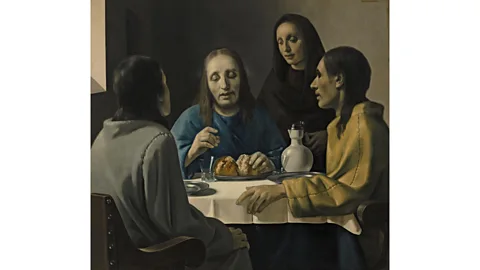 Museum Boijmans Van Beuningan
Museum Boijmans Van BeuninganIt’s uplifting to consider that one’s worth, as an individual, will not be tethered to the previous. Not so with artwork. A portray, sculpture, or drawing with out a heavy historical past will not be, alas, extra inspiring for its lack of bags. It’s suspicious. Or reasonably, it must be. All too typically, greed can intrude within the clear-sightedness of assessing the authenticity of a portray or sculpture. Issues have histories we wish them to have. That was definitely the case with a succession of phoney Vermeers that issued from the workshop of a Dutch portraitist, Han van Meegeren – one of the prolific and profitable forgers of the twentieth Century. Determined to consider that the miraculous look of canvases, together with an outline of Christ and The Males at Emmaus, is likely to be misplaced masterpieces from the identical hand that made Lady with a Pearl Earring and The Milkmaid, collectors have been blind to the obvious absence of any hint of the work’ provenance – their prior possession, exhibition historical past, and proof of gross sales. Everybody was fooled.Â
In authenticating the portray within the Burlington Journal, one professional insisted “in no different image by the good Grasp of Delft do we discover such sentiment, such a profound understanding of the Bible story – a sentiment so nobly human expressed by way of the medium of the very best artwork”. But it surely was all a lie. In a exceptional twist, Van Meegeren ultimately selected to reveal himself as a fraudster shortly after the top of World Struggle Two, after being charged by Dutch authorities with the crime of promoting a Vermeer – subsequently a nationwide treasure – to the Nazi official Hermann Göring. To show his innocence, if innocence it is likely to be known as, and display that he had merely bought a nugatory pretend of his personal forging, not an actual Outdated Grasp, Van Meegeren carried out the extraordinary feat of whisking up a recent masterpiece from skinny air earlier than the consultants’ astonished eyes. Voilà , Vermeer.
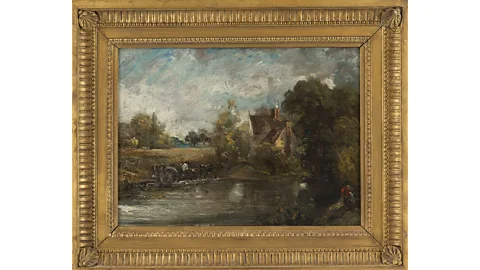
Extra lately, in a 2017 episode of BBC’s well-liked arts programme Faux or Fortune?, presenter Philip Mould’s long-held hunch {that a} portray he as soon as bought for ÂŁ35,000 was actually a priceless unique by the English Romantic artist John Constable – an alternate, and beforehand undocumented, view of the panorama artist’s 1821 masterpiece The Hay Wain – was dramatically confirmed after Mould and fellow presenter Fiona Bruce excavated long-buried monetary data. Having traced the portray’s possession again to a sale by the artist’s son, the group recalculated the canvass true worth to be ÂŁ2m, proving that some pasts are value hanging onto.Â
Rule 3: Squint
Artists’ gestures – their concurrently studied and instinctive brushwork and draughtsmanship – are nothing lower than fingerprints writ massive throughout canvases and works on paper. One artist’s lightness of contact and one other’s sturdiness of stroke are exceedingly tough to falsify, particularly in case you are acutely aware that each twitch of your brush and jot of your pen shall be scrutinised by suspicious eyes and cutting-edge tools. Stress below strain is tough to take care of, an impediment that the British forger Eric Hebborn (who died below suspicious circumstances in Rome in 1996 after a profession spent counterfeiting greater than 1,000 works attributed to everybody from Mantegna to Tiepolo, Poussin to Piranesi) overcame with alcohol.
By all accounts, brandy was Hebborn’s tipple of alternative for calming his rattling nerves. It allowed him to inhabit, with out inhibition, the thoughts and muscle of whichever previous grasp he was channelling. Whereas fakes from the palms of Beltracchi and Van Meegeren have since been discovered below nearer inspection to be riddled with incoherent gestures, the fluidity of drawings falsified by the tipsy Hebborn in his heyday within the Nineteen Seventies and 80s continues to confound the consultants. To today, establishments that possess works that handed by way of his palms refuse to simply accept they’re all fakes, such because the Metropolitan Museum of Artwork’s pen and ink drawing View of the Temples of Venus and of Diana in Baia from the South, a piece it nonetheless insists is from the circle of Jan Brueghel the Elder. What do you assume?
Rule 4: Go deeper
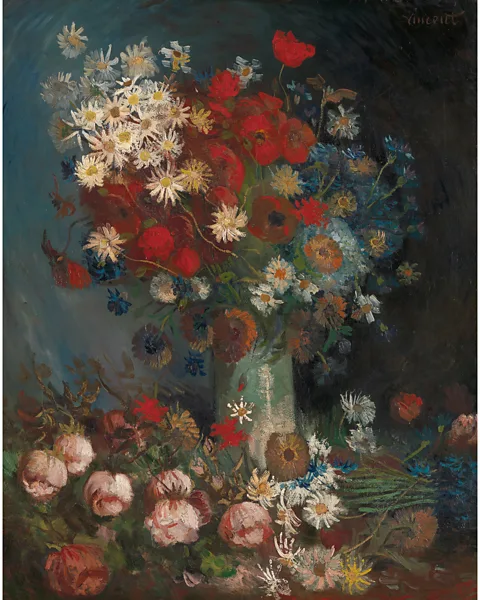 Getty Pictures
Getty PicturesWhen the evaluation of pigments, provenance, and paintbrush strain nonetheless leaves you stumped, it might be essential to dive a bit deeper. For 20 years because the Nineties, the authenticity of a nonetheless life purportedly by Vincent van Gogh was serially confirmed and refuted by consultants. To some, the garish reds and submarine blues that echoed eerily from the bouquet of roses, daisies, and wildflowers did not have the ring of reality and appeared at odds with the painter’s palette. The absence of any possession report for the portray did not assist.
However an X-ray undertaken in 2012 put inquiries to relaxation when it revealed that the artist, pinching pennies, reused a canvas on which he had created one other picture fully – one to which he makes specific reference in a letter from January 1886. “This week”, Van Gogh remarked to his brother Theo, “I painted a big factor with two nude torsos – two wrestlers… and I actually like doing that.” As if proleptically anticipating the following scholarly wrangle over the work’s authenticity that the portray would in time set off, the static tussle of the 2 athletes, trapped beneath paint for over a century, not solely rescued the work from unfair allegations of illegitimacy, it created a type of recent composite portray, a vivid compression – a freeze body of a stressed thoughts endlessly struggling with itself, determined to outlive.
Rule 5: It is the little issues that offer you away
As a last safeguard in authenticating a murals, run the spell test. Doing so would have saved the collector Pierre Lagrange $17m – the value he paid in 2007 for an in any other case compelling forgery of a small 12x18in (30x46cm) portray falsely attributed to the American Summary Expressionist Jackson Pollock. Well-known for his drippy type, Pollock has a surprisingly legible signature, an unmistakable “c” earlier than the ultimate “okay”. The skipped consonant would do greater than expose a single forgery; it might shatter the status of a complete gallery.
The sloppy signature was simply considered one of many missed purple flags in works falsely attributed to Rothko, De Kooning, Motherwell and others that the Knoedler & Co gallery, considered one of New York’s oldest and most esteemed artwork establishments, succeeded in promoting for $80m. The fraudulent works had been provided by a doubtful supplier who claimed they got here from an enigmatic collector, “Mr X”. Simply earlier than the scandal erupted within the press, the gallery closed its doorways after 165 years, whereas the suspected perpetrator of the fakes, a self-taught Chinese language septuagenarian by the title of Pei-Shen Qian, who had operated from a forger’s workshop in Queens, vanished; he later turned up in China.


